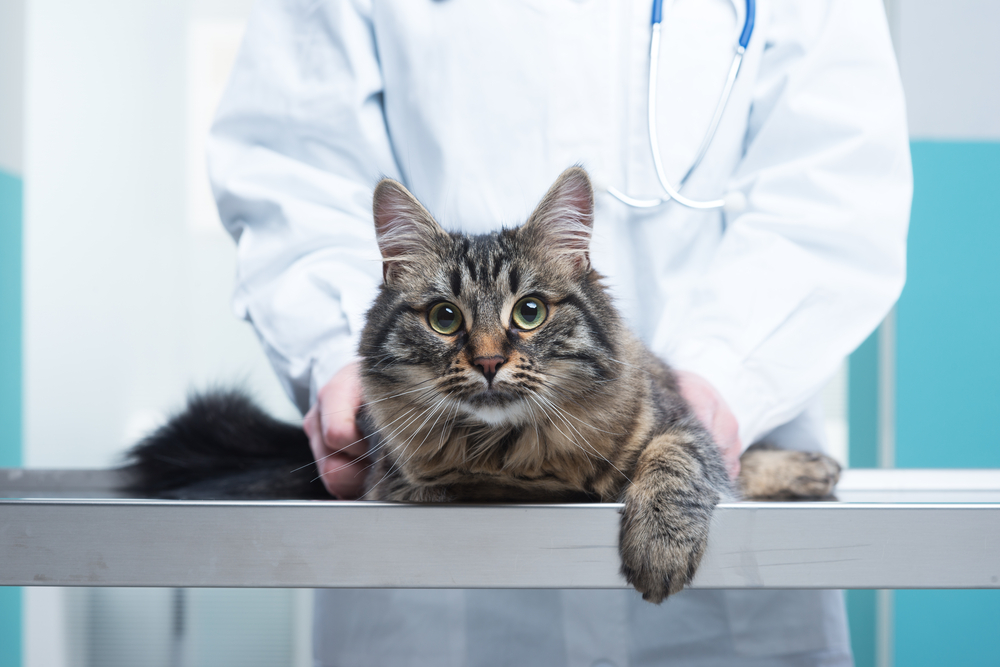

Mast cell tumors (or mastocytomas) are graded according to their location in the skin, presence of inflammation, and how well they are differentiated. Grade 1 cells are well differentiated with a low potential for metastasis; Grade 2 cells are intermediately differentiated with a potential for locally invasive metastasis; and Grade 3 cells are poorly differentiated or undifferentiated with a high potential for metastasis. Differentiation is a determination of how much a particular tumor cell looks like a normal cell; the more differentiated, the more like the normal cell. In general, the more differentiated the mast cell tumor is, the better the prognosis is.
Siamese cats appear to be more susceptible to mast cell tumors than other breeds, and are susceptible to histiocytic cutaneous (skin) mast cell tumors (where histiocytes are mature macrophages that reside in connective tissue). The mean age for the development of the mastocytic (mast cell) form occurs at mean age of 10 years in cats; the histiocytic form occurs at a mean age of 2.4 years. It has been reported in animals less than one year of age and in cats as old as 18 years of age.
Symptoms may be dependent on the location and grade of the tumor.
Symptoms are also dependent on the stage of the disease:
Unknown
You will need to give a thorough history of your cat's health, including a background history of symptoms. The history you provide may give your veterinarian clues as to which organs are being affected.
The most important preliminary diagnostic test will be an examination of the cells taken from one of the tumors. This will be performed with a fine needle aspirate and will determine the presence of an abnormal amount of mast cells in the blood. A surgical tissue biopsy will be necessary for definitive identification of both the grade of the cells occupying the mass, and the stage the disease is in. Additionally, your veterinarian may examine a sample from a draining lymph node, from the bone marrow, or from the kidney and spleen. X-ray and ultrasound images of the chest and abdomen will also be component of determining the exact location and stage of the tumor's development.
Manipulation of the tumor may result in the release of histamines from the tumor due to the mast cells releasing from the tumor into the blood stream. Antihistamines may be prescribed to alleviate some of the symptoms related to this effect. This same behavior can come into play as a result of surgical intervention; antihistamines will be used under the circumstances, as a large release of histamines on the body can have a drastic effect on the organs.
Surgery is the treatment of choice for mast cell tumors of the skin. Surgical removal of the spleen is the treatment of choice for mast cell tumors of the spleen. Surgical removal of the spleen along with chemotherapy may be beneficial when mast cells circulating in the blood accompany mast cell tumors of the spleen.
Excisional biopsy with wide margins is reasonable for very small tumors. Incisional biopsy of large mast cell tumors is recommended to obtain a tumor grade, to predict prognosis, and to establish a treatment plan. Your veterinarian will probably consider pretreatment with antihistamine therapy prior to an incisional biopsy. Biopsy of lymph nodes and other suspicious internal organs is appropriate. Complete surgical removal with 3-cm margins in all planes is recommended for all moderate Grade 2, high Grade 2, and Grade 3 tumors; margins of 2 cm or less may be adequate for Grade 1 and low Grade 2 tumors. Surgical removal of regional lymph nodes is recommended for all high Grade 2 and Grade 3 tumors.
Your veterinarian will want to microscopically evaluate any new masses and evaluate the lymph nodes at regular intervals in order to detect spread of Grade 2 or Grade 3 tumors. Your doctor will also want to perform a complete blood count at regular intervals if your cat is receiving chemotherapy. Immunity can be affected by cancer fighting drugs, so it will be important to protect your cat from illness and communicable diseases during this period, as well as sticking closely to a healthy, immune boosting diet.
 Brain Inflammation in Cats
Encephalitis in Cats
Inflammation of the brain, a
Brain Inflammation in Cats
Encephalitis in Cats
Inflammation of the brain, a
 Stud Tail in Cats
Supracaudal Gland Hyperplasia in Cats
Stud tail i
Stud Tail in Cats
Supracaudal Gland Hyperplasia in Cats
Stud tail i
 Ingestion of Feces and Foreign Objects in Cats
Coprophagia and Pica in Cats
Pica is a med
Ingestion of Feces and Foreign Objects in Cats
Coprophagia and Pica in Cats
Pica is a med
 Unintentional Eye Movement in Cats
Nystagmus in Cats
Nystagmus causes the involuntar
Unintentional Eye Movement in Cats
Nystagmus in Cats
Nystagmus causes the involuntar
 What Kind Of Human Food Can Cats Eat?
People Food For CatsMany cat
What Kind Of Human Food Can Cats Eat?
People Food For CatsMany cat
Copyright © 2005-2016 Pet Information All Rights Reserved
Contact us: www162date@outlook.com